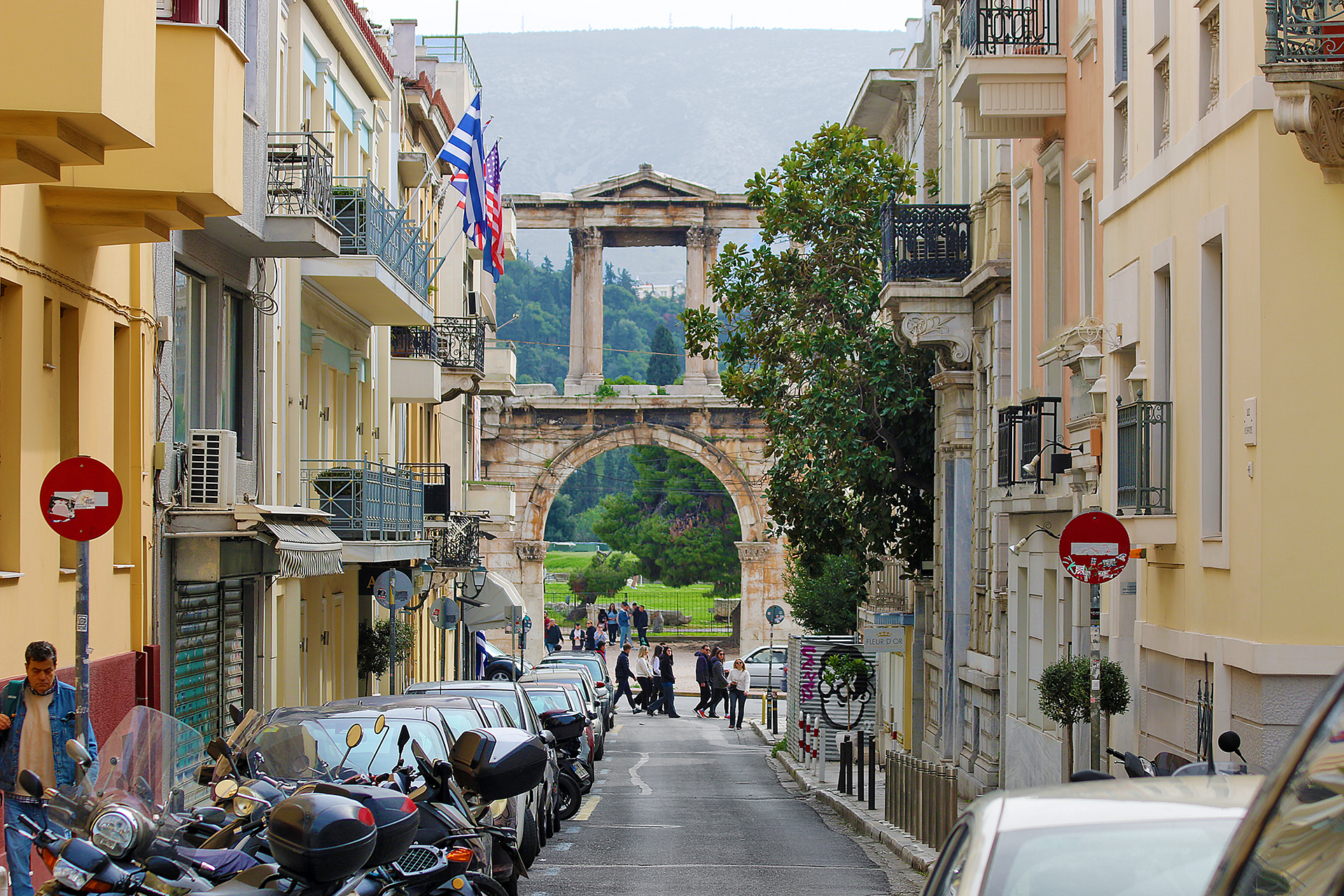The Arch of Hadrian in Athens in Greece was constructed from Pentelic marble during the Hellenistic Period in the years 131 through 132 and is named after Hadrian, who was an emperor of Rome from the year 117 to the year 138.
Arch of Hadrian in Athens in Greece
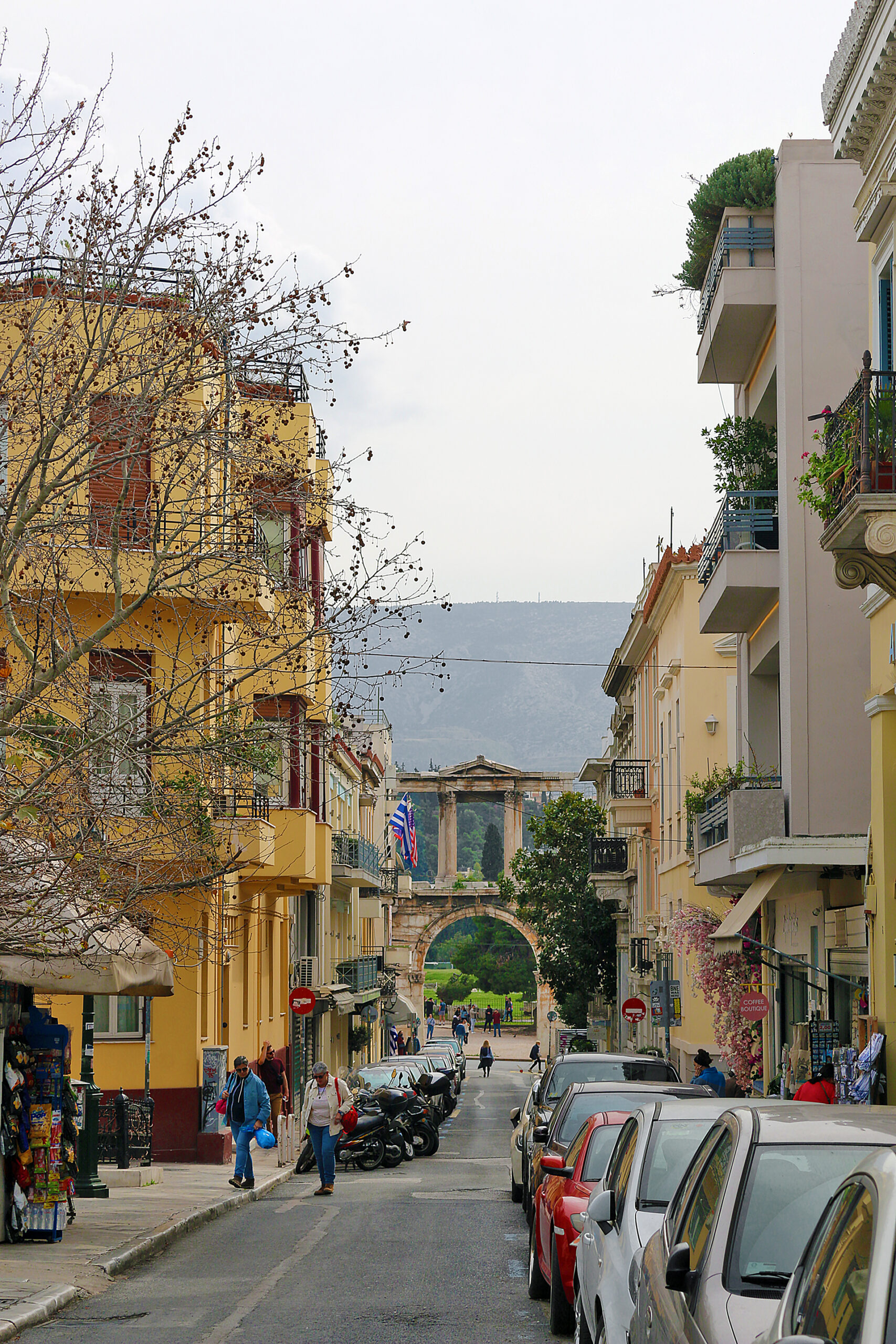
A view of the Arch of Hadrian emerges as one walks east southeast on a street called Lisikratous.
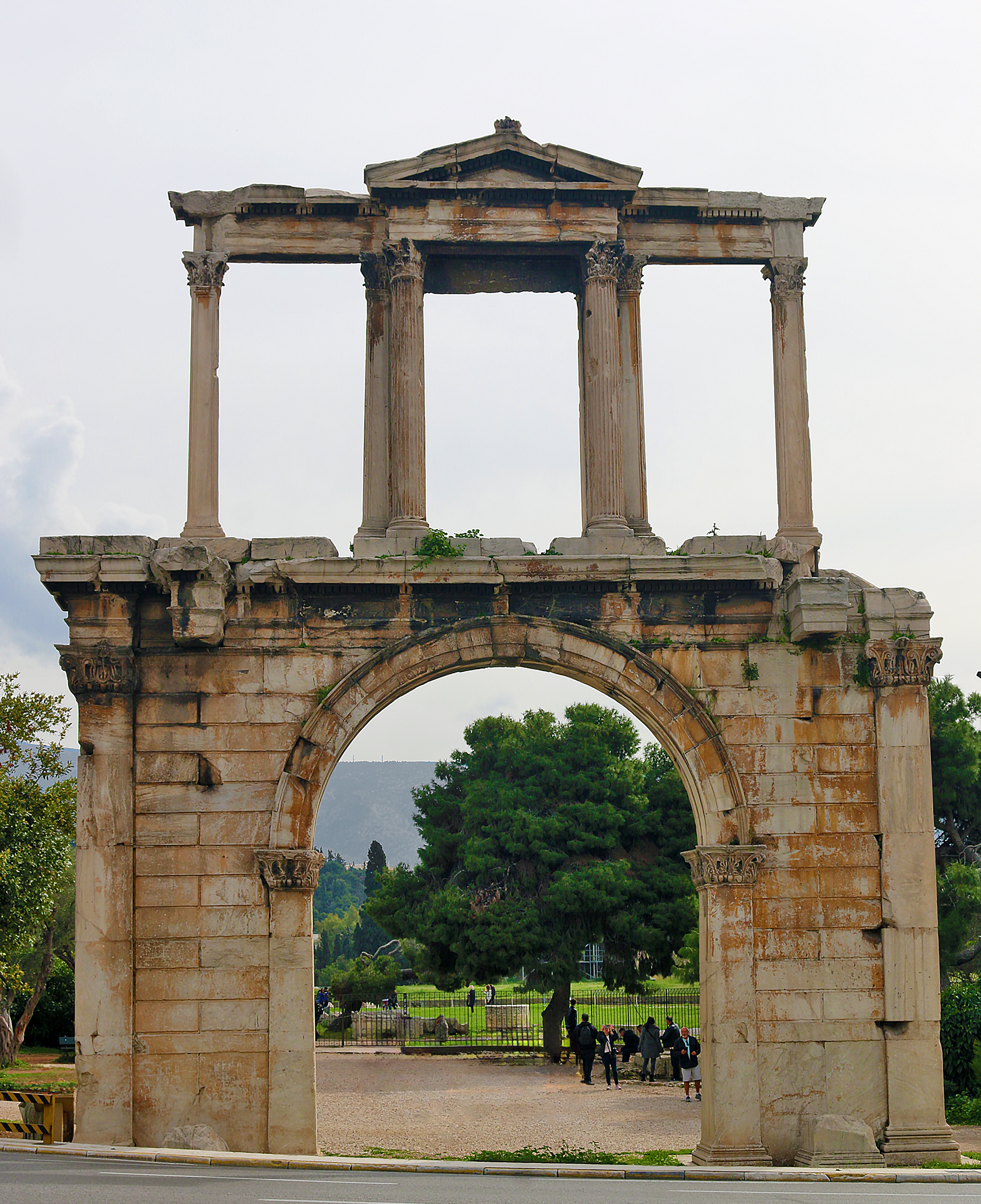
This triumphal arch lies on an ancient street that led from the old city of Athens to the new section which was built by Hadrian. It was constructed by the Athenians in honor of their benefactor emperor.
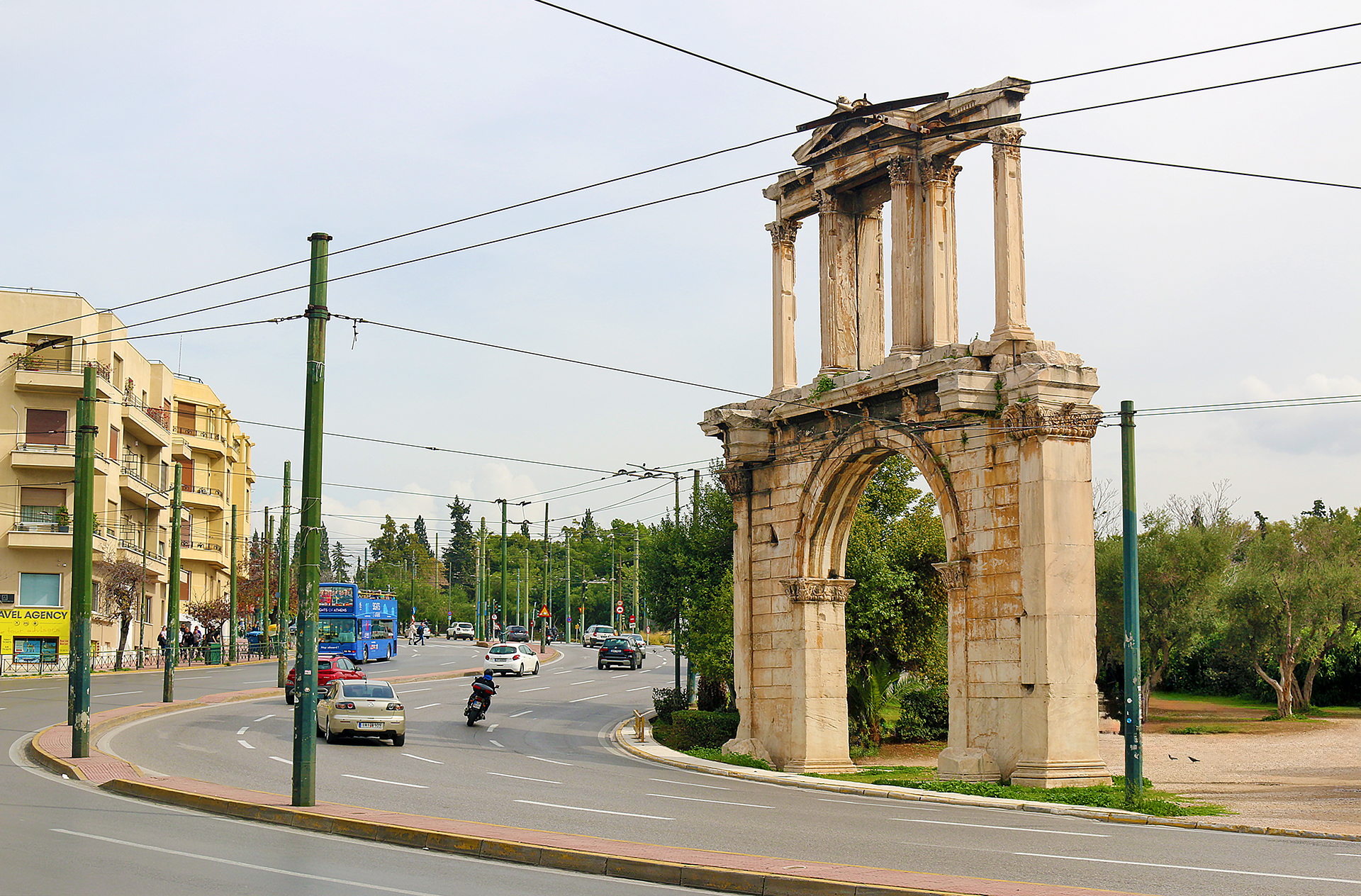
The monument, which is 18 meters high and 13 meters wide and is in the Corinthian order, has two identical façades and is divided vertically into two distinct sections.
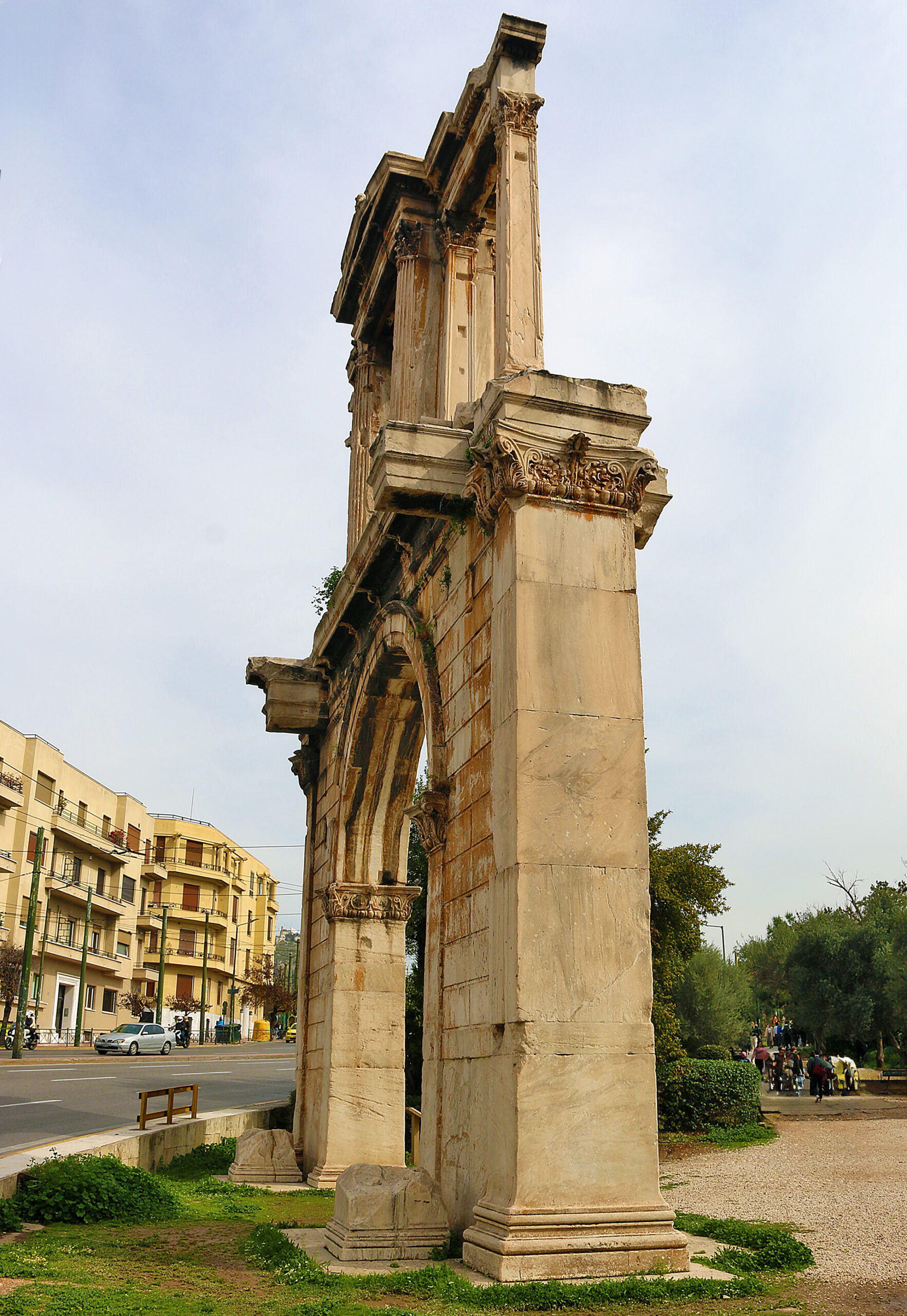
The lower follows the form of a Roman honorary arch; while the upper imitates the traditional Greek propylon. Two inscriptions are carved on the architrave, with one on each side: the first — on the side towards the Acropolis — reads “This is Athens, the ancient city of Theseus”; the second, on the other side facing the new city, reads “This is the city of Hadrian and not of Theseus”. The remains of wall-paintings may suggest that in the Middle Ages, the arch was part of a Christian church.
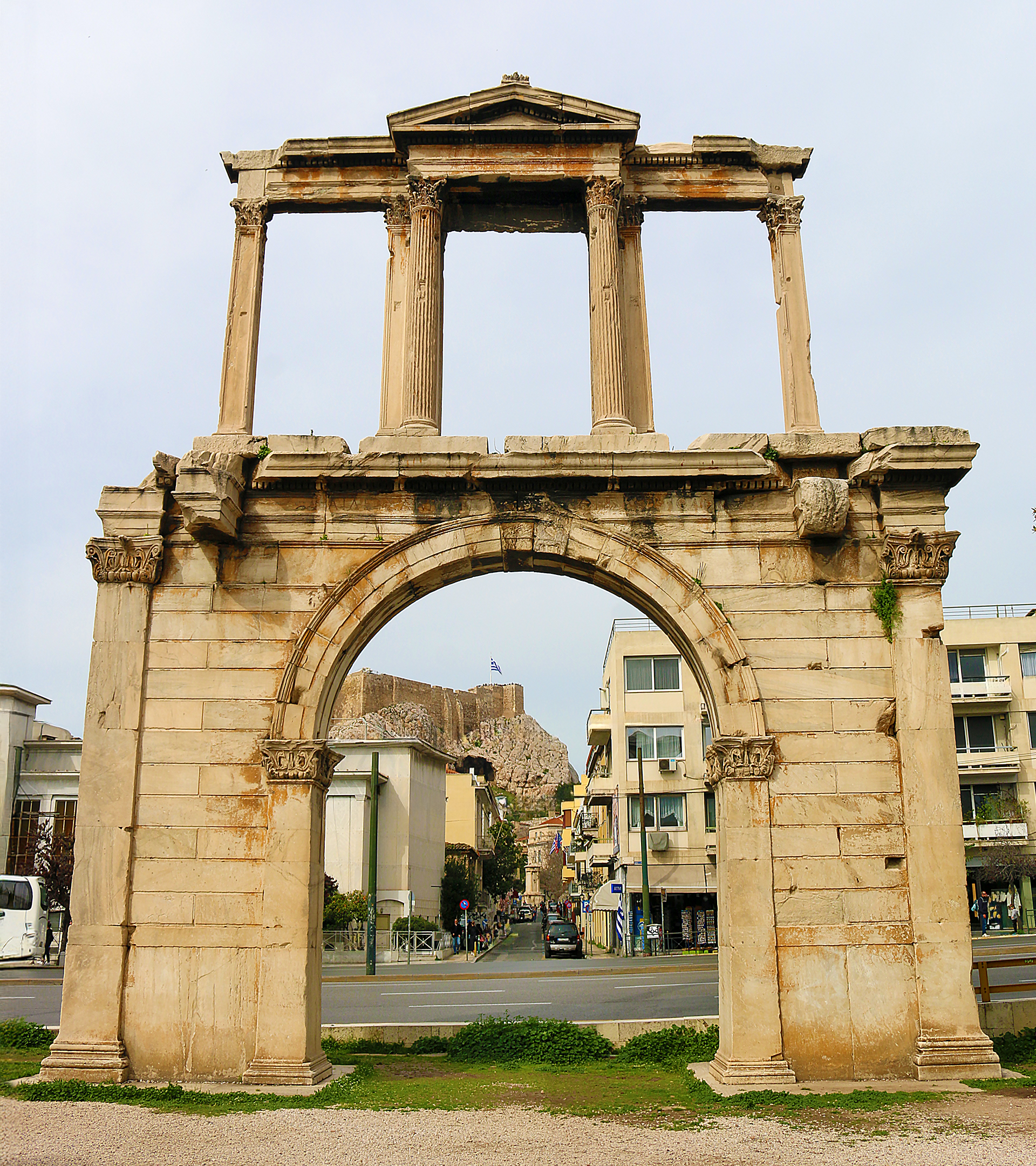
The Arch of Hadrian was converted into a gate of the defense wall around Athens in 1778, and was known as the “Princess Gate”.
Final Boarding Call
Give yourself a minimum of 15 minutes to admire the Arch of Hadrian. The walk between the Arch of Hadrian and the Parthenon is fewer than 15 minutes.
Arch of Hadrian
Leoforos Vasilisis Amalias 50
Athens 105 58
Greece
The Arch of Hadrian — which has no official Internet web site — is accessible 24 hours per day all year long, as it is never closed. No admission fee is charged. No facilities are immediately available to the Arch of Hadrian. Parking on the street nearby is limited.
All photographs ©2024 by Brian Cohen.
